Gamecock Fanatics
You are using an out of date browser. It may not display this or other websites correctly.
You should upgrade or use an alternative browser.
You should upgrade or use an alternative browser.
Countdown to Kickoff
- Thread starter Swayin
- Start date
Sikorsky S-39 seaplane.
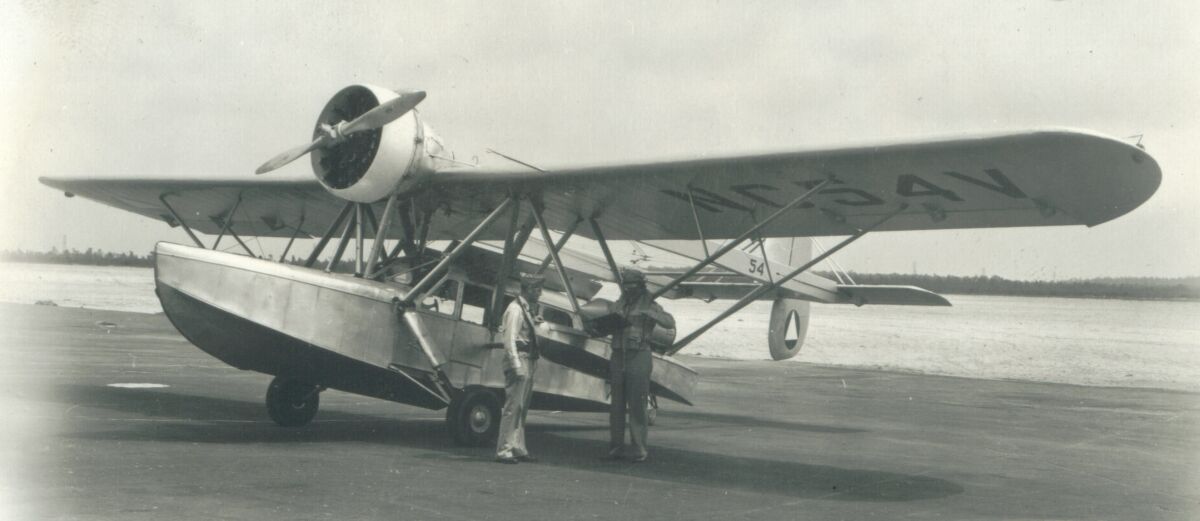

https://en.wikipedia.org/wiki/Sikorsky_S-39Operational history
Spirit of Africa
Filmmakers Martin and Osa Johnson used a giraffe-patterned S-39 Spirit of Africa, with companion zebra-striped S-38 Osa's Ark, to explore Africa extensively, making safari movies and books.
Military usage
The C-28
One example of the S-39 was acquired by the United States Army Air Corps in 1932, given the designation Y1C-28. It was evaluated for use in coastal patrol and light transport roles; in 1934 it was re-designated C-28 and assigned as a liaison aircraft to the United States Military Academy.
Yacht
Edward A. Deeds had the yacht Lotosland designed to incorporate aircraft capability. After loss of the planned aircraft on first loading Deeds ordered an S-39-A replacement the next day. The aircraft was intended to allow Deeds to quickly travel from his yacht to business and events ashore.
Submarine USS S-39.
_Off_Olongapo,_Philippine_Islands,_1935.jpg)
_Off_Olongapo,_Philippine_Islands,_1935.jpg)
https://en.wikipedia.org/wiki/USS_S-39_(SS-144)World War II
3rd & 4th war patrol
As Japanese landings at Timor were expected, S-39 was ordered to the Karimata Strait. The main Japanese force transited the strait and landed at Java without S-39 sighting it. Operating in the South China Sea and Java Sea, she reconnoitered Chebia Island in search of a British admiral and an air marshal who had supposedly escaped Singapore. S-39 landed a search party, but failed to locate any refugees. She then sailed for Australia via the Sunda Strait, where on 4 March she found the 6,500 long tons (6,600 t) tanker (credited as 5,000 long tons (5,100 t) during the war) Erimo. S-39 fired four Mark 10 torpedoes, scoring three contact hits. This made S-39, like her "Sugar" boat sisters, S-37 and S-38, well known in the news. Two weeks later, she arrived at Fremantle, Australia. By the end of April, she had moved to Brisbane, which she departed on her fourth patrol on 10 May. For the next four weeks, she reconnoitered designated areas of the Louisiade Archipelago, and then operated in the Solomon Islands.
Last edited by a moderator:
USS Barr, APD-39. Formerly DE-576.
_underway_on_31_October_1944.gif)
_underway_on_31_October_1944.gif)
https://en.wikipedia.org/wiki/USS_BarrUSS Barr (DE-576/APD-39), originally a Buckley-class destroyer escort, and later a Charles Lawrence-class of the United States Navy named for Pvt. Woodrow Wilson Barr of Keyser, West Virginia.
Barr was laid down on 5 November 1943 at Hingham, Massachusetts, by the Bethlehem Shipbuilding Co.; launched on 28 December 1943; sponsored by Mrs. Cora Dell Barr, Pfc. Barr's mother; and commissioned on 16 February 1944, Lieutenant Commander Henry H. Love in command.
Namesake
Woodrow Wilson Barr was born on 8 June 1918 in Keyser, West Virginia. He graduated from Parsons High School and following graduation worked for four years before enlisting in the United States Marine Corps on 13 January 1942. He completed his recruit training at Parris Island, South Carolina, followed by training at Quantico.
He was deployed to the Pacific Theatre as a part of the 1st Marine Raider Battalion. Barr was one of 45 Marines who were killed in action during the U.S. recapture of Tulagi from the Japanese on 7 August 1942. Barr was posthumously awarded the Silver Star and the Purple Heart.
Last edited by a moderator:
The Bell P-39 Airacobra. Poor high altitude performance but solid low-altitude specs meant she was disliked by the Americans but loved by the Russians, who received thousands in lend-lease. The most successful and numerous use of the P-39 was by the Red Air Force (Военно-воздушные силы, Voenno-Vozdushnye Sily, VVS). They received the considerably improved N and Q models via the Alaska-Siberia ferry route. The tactical environment of the Eastern Front did not demand the high-altitude performance the RAF and AAF did. The comparatively low-speed, low-altitude nature of most air combat on the Eastern Front suited the P-39's strengths: sturdy construction, reliable radio gear, and adequate firepower.
Soviet pilots appreciated the cannon-armed P-39 primarily for its air-to-air capability. A common Western misconception is that the Bell fighters were used as ground attack aircraft. This is because the Soviet term for the mission of the P-39, prikrytiye sukhoputnykh voysk (coverage of ground forces) is commonly translated ground support, which is often taken to mean close air support. In Soviet usage, it has a broader meaning. Soviet-operated P-39s did make strafing attacks, but it was "never a primary mission or strong suit for this aircraft".[52] The Soviets developed successful group aerial fighting tactics for the Bell fighters and scored a surprising number of aerial victories over a variety of German aircraft. Soviet P-39s had no trouble dispatching Junkers Ju 87 Stukas or German twin-engine bombers and matched, and in some areas surpassed, early and mid-war Messerschmitt Bf 109s. The usual nickname for the Airacobra in the VVS was Kobrushka ("little cobra") or Kobrastochka, a blend of Kobra and Lastochka (swallow), "dear little cobra"
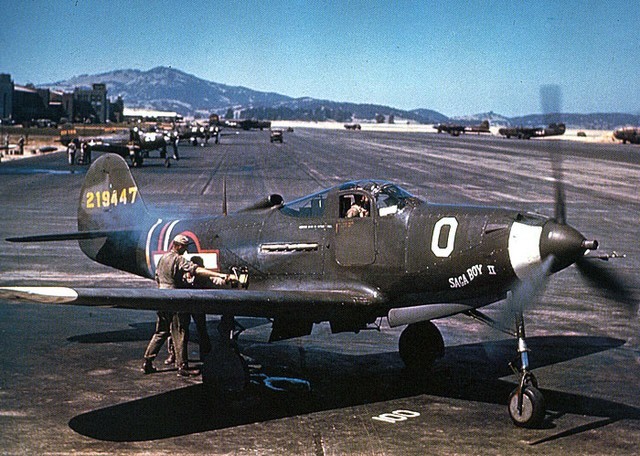
Soviet pilots appreciated the cannon-armed P-39 primarily for its air-to-air capability. A common Western misconception is that the Bell fighters were used as ground attack aircraft. This is because the Soviet term for the mission of the P-39, prikrytiye sukhoputnykh voysk (coverage of ground forces) is commonly translated ground support, which is often taken to mean close air support. In Soviet usage, it has a broader meaning. Soviet-operated P-39s did make strafing attacks, but it was "never a primary mission or strong suit for this aircraft".[52] The Soviets developed successful group aerial fighting tactics for the Bell fighters and scored a surprising number of aerial victories over a variety of German aircraft. Soviet P-39s had no trouble dispatching Junkers Ju 87 Stukas or German twin-engine bombers and matched, and in some areas surpassed, early and mid-war Messerschmitt Bf 109s. The usual nickname for the Airacobra in the VVS was Kobrushka ("little cobra") or Kobrastochka, a blend of Kobra and Lastochka (swallow), "dear little cobra"

Homebrewcock
GCF Top Poster
Homebrewcock
GCF Top Poster
Larry Csonka.
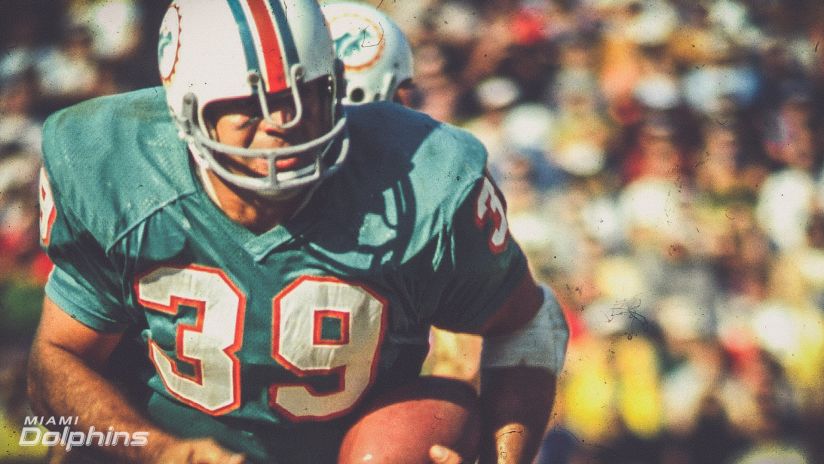

#39 RB Carl West (1978-82) pictured below scoring Carolina's lone TD from the UGA 39-yard line in the infamous 1980 "George vs. Herschel" game with 3:33 left in the 3rd quarter in Athens. Go back and watch the game on YouTube. He came in for Rogers on the first possession after a UGA punt and cut through the UGA defense like a knife through hot butter for our lone TD in that game, yet Carlen left a tired Rogers in the game late in the 4th quarter rather than substitute a fresh West in as before. A fatigued Rogers fumbled and that was the ballgame. We lost the game 13-10.

Here are Carl West's career Gamecock stats:
Rushing
Year
Att
Yds
Avg
TD
1980
33
341
10.3
3
1981
16
47
2.9
0
1982
40
195
4.9
0
Tot
89
583
6.6
3
Receiving
Year
Rec
Yds
Avg
TD
1981
3
25
8.3
0
1982
7
50
7.1
2
Tot
10
75
7.5
2
You don't hear many people talk about it, but I would count Carl West from MacClenny, FL, as part of the late Jim Carlen's coaching tree.
https://www.washingtonpost.com/archive/sports/1980/11/02/walker-carries-undefeated-georgia-past-south-carolina-13-10/f884821a-c3a2-4775-bc4b-cc5f38c0d36e/Rogers tried everything in his power to win the game single-handedly. He gained 168 yards in 35 carries, but he fumbled with less than six minutes left and Georgia controlled most of the rest of the way.
Rogers, who rushed for more than 100 yards for the 18th consecutive game, left the game for one play before the fumble because he was tiring. But Gamecock Coach Jim Carlen sent his senior back in on second and seven from the Georgia 17, with South Carolina down by three.
Rogers was hit by several Bulldog defenders three yards downfield and fumbled the ball over to Georgia's Chris Welton.
"It was a dumb play on the part of Coach Carlen to put George back in the game, as tired as he was," Carlen said afterward.
Walker, meanwhile, insisted he was not tired after carrying the ball 43 times, nine more than the school record.
"Did I carry the ball that many times?" Walker asked. "I sure don't feel tired."
The teams seemed almost incidental in the pregame hoopla, with bumper stickers all over the South touting one running back or the other for the Heisman Trophy. Many left the stadium not knowing it was fullback Carl West, who wears No. 39, who made South Carolina's 39-yard touchdown run in the third quarter, not Rogers, who wears No. 38. Eddie Leopard's 45-yard field goal in the same quarter provided the only other South Carolina points.
Here are Carl West's career Gamecock stats:
Rushing
Year
Att
Yds
Avg
TD
1980
33
341
10.3
3
1981
16
47
2.9
0
1982
40
195
4.9
0
Tot
89
583
6.6
3
Receiving
Year
Rec
Yds
Avg
TD
1981
3
25
8.3
0
1982
7
50
7.1
2
Tot
10
75
7.5
2
You don't hear many people talk about it, but I would count Carl West from MacClenny, FL, as part of the late Jim Carlen's coaching tree.
http://gamecockarchives.com/plyrbio_2015.php?rm_id=westca01West worked as a backup fullback in 1979 and split time there in 1980 but had one of the big plays of the year when he broke loose for an 84-yard touchdown run in a win over Pacific. He also had touchdown runs of 58 yards (vs. Cincinnati) and 39 yards (against Georgia) that season. West began the 1981 season as the starting fullback, but suffered a knee injury in the second game of the year that wiped out the rest of the season. He split time with Dominique Blasingame at fullback as a senior, scoring on touchdown passes against Pacific and Furman. He took over as head coach at Baker County, his alma mater, in 1998 and led the team through 2005. At the time of his retirement from coaching he had the most seasons reaching the playoffs in Baker County history (3) and coached one of only two playoff wins in school history. He was also the head coach at Baldwin High School in Baldwin, Florida.
Last edited by a moderator:
Sikorsky S-38 seaplane.
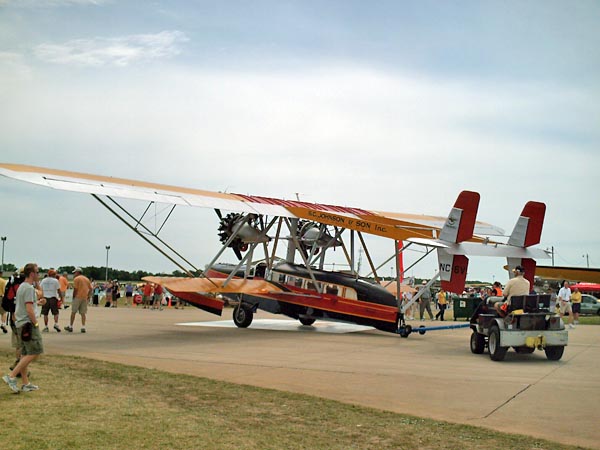



https://en.wikipedia.org/wiki/Sikorsky_S-38The Sikorsky S-38 was an American twin-engine ten-seat sesquiplane amphibious aircraft. It was Sikorsky's first widely produced amphibious flying boat, serving successfully for Pan American Airways and the United States military.
Design and development
The S-38 was developed based upon experience with the Sikorsky S-34 and S-36. The S-38 first flew in May 1928. According to Sikorsky, "The ship had very good takeoff characteristics from land and water. It had a climb of 1,000 feet (300 m) per minute fully loaded, and a maximum speed close to 130 miles per hour (210 km/h). The ship could cruise nicely around 100 miles per hour (160 km/h), and it stayed in the air on one engine. All these features were excellent for 1928 and at that time there were no other amphibians with such performance characteristics. In 1929, an S-38 was used by Colonel Lindbergh to inaugurate air mail service between the United States and the Panama Canal." The United States Navy ordered two aircraft, and Pan Am was an early customer.
A total of 101 aircraft were built, manufactured originally by the Sikorsky Manufacturing Corporation of Long Island, New York, and by the Sikorsky Aviation Corporation in Bridgeport, Connecticut. Sikorsky was acquired by United Aircraft and Transport Corporation in mid-production.
USS San Francisco, CA-38.
_off_the_Mare_Island_Naval_Shipyard_on_13_October_1944_(19-N-73588).jpg/1280px-USS_San_Francisco_(CA-38)_off_the_Mare_Island_Naval_Shipyard_on_13_October_1944_(19-N-73588).jpg)


https://usssanfrancisco.org/the-foundation-2/
Sa-lute!
_off_the_Mare_Island_Naval_Shipyard_on_13_October_1944_(19-N-73588).jpg/1280px-USS_San_Francisco_(CA-38)_off_the_Mare_Island_Naval_Shipyard_on_13_October_1944_(19-N-73588).jpg)
https://en.wikipedia.org/wiki/USS_San_Francisco_(CA-38)USS San Francisco (CA-38), a New Orleans-class cruiser, was the second ship of three of the United States Navy named after the city of San Francisco, California. Commissioned in 1934, she was one of the most decorated ships of World War II, earning 17 battle stars and the Presidential Unit Citation.
Like most of her sister ships, she saw extensive action during the Guadalcanal campaign, including the Battle of Cape Esperance and the Naval Battle of Guadalcanal, during which she was heavily damaged and her captain and admiral killed. Earlier in the battle she mistakenly fired on the light cruiser Atlanta, causing serious damage and inflicting numerous casualties.
Decommissioned immediately after the end of the war, she was sold for scrap in 1959.
Her bridge wings, damaged during the Naval Battle of Guadalcanal and removed during repairs, are now mounted on a promontory in Golden Gate National Recreation Area. They are set on the great circle course from San Francisco to Guadalcanal.


https://usssanfrancisco.org/the-foundation-2/
Sa-lute!



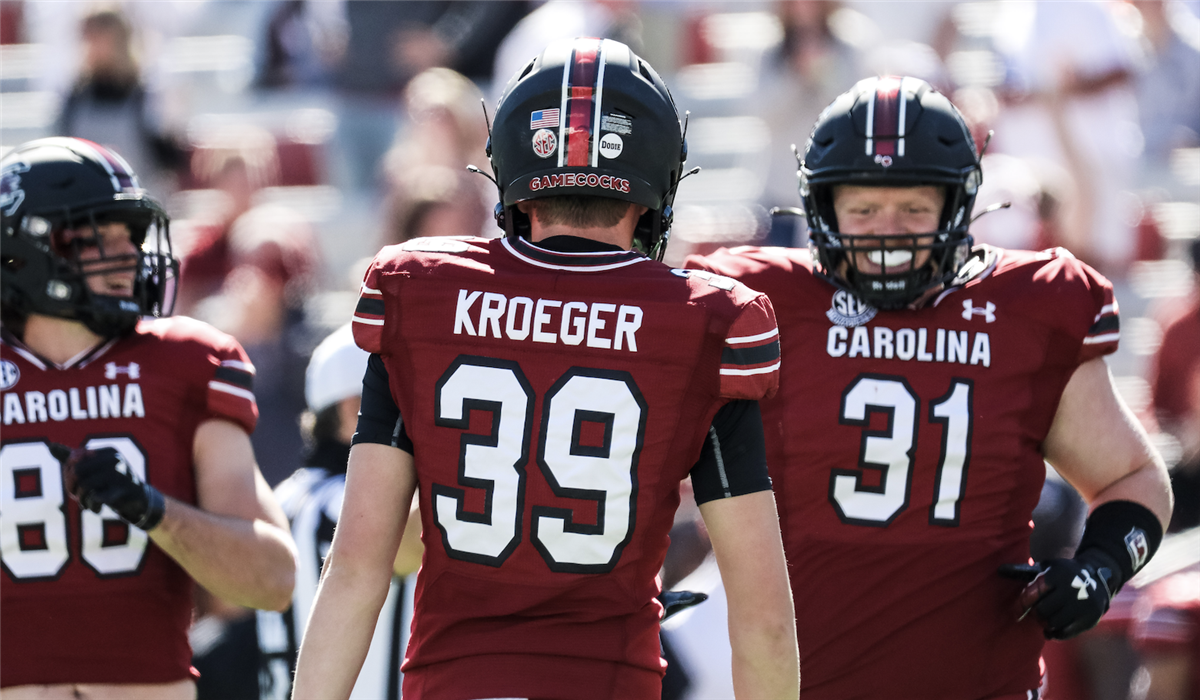



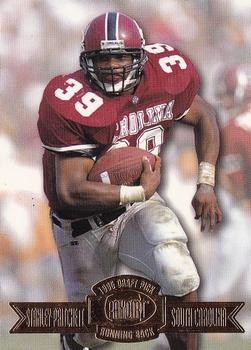


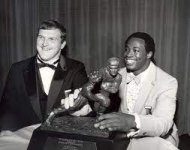
.jpg/1280px-330-CFD-DN-SC-87-02014_(23065821065).jpg)